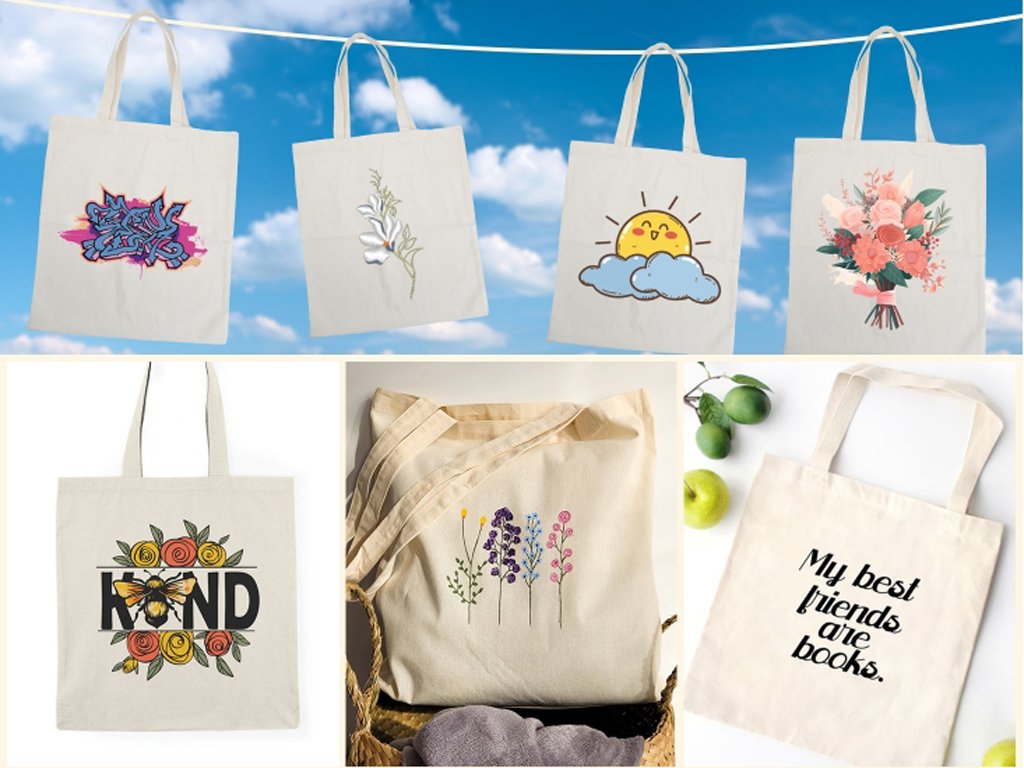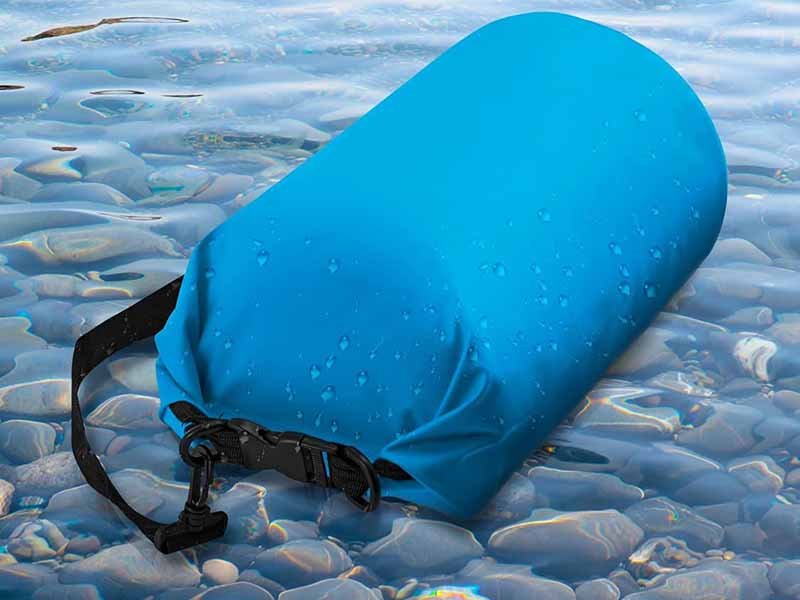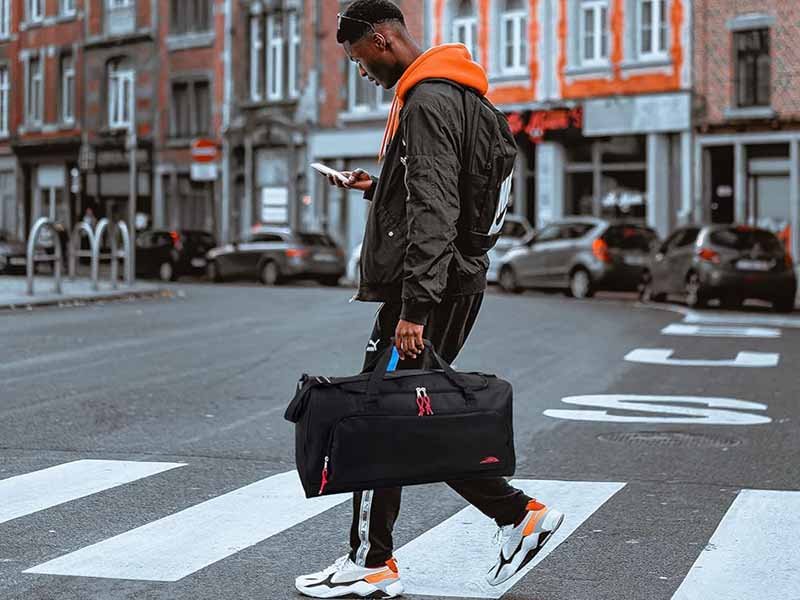Springtime often brings a surge of creativity, making it the perfect season to embark on new artistic projects. One delightful way to channel this creative energy is by decorating a blank tote bag. The possibilities are endless when it comes to transforming a simple bag into a unique piece of wearable art. Whether you prefer to take on the challenge yourself or enlist the help of a professional personalization service, there are plenty of options to explore.
For those who enjoy DIY projects, there are numerous customization techniques to consider. These methods vary in complexity, allowing you to choose one that matches your skill level and the amount of effort you want to invest. In the following sections, we will explore 13 of our favorite customization techniques, detailing the specific types of fabrics that work best with each method. this guide will help you create a stunning, personalized tote bag that showcases your creativity and style.
Silk Screen Printing
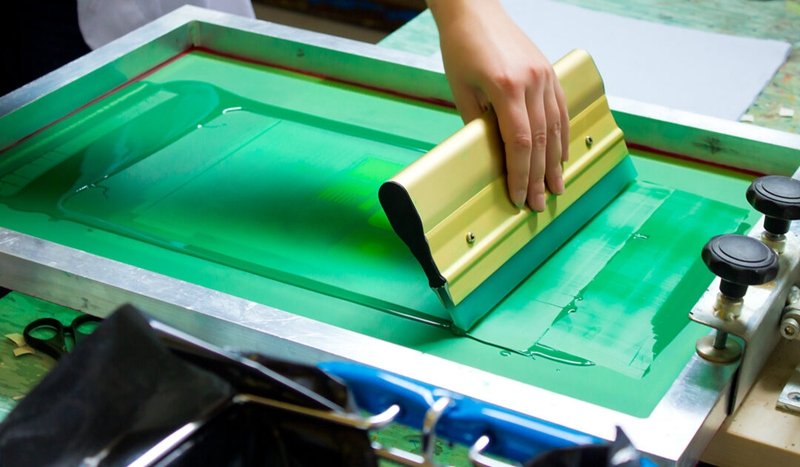
This method is also known as screen printing or serigraphy and is widely used in various fields, including posters, fabrics, and artwork. renowned artist Andy Warhol significantly influenced the art world through his use of screen printing. Warhol began experimenting with this technique in the early 1960s, initially using drawings as his base. He later shifted to photo-silkscreen, a process that uses photographs as stencils, resulting in sharper and more defined images.
Silk Screen printing involves creating a design by pressing liquid ink through a stenciled mesh. Each color in the design requires a separate stencil, and after the ink is applied, the fabric is cured in an oven. due to the intricate nature of the process and the need for multiple stencils, screen printing is best suited for larger orders of tote bags featuring simple designs with a limited number of colors.
The choice of fabric plays a critical role in the success of any customization technique. Although advancements in ink technology have expanded the range of suitable fabrics, natural fabrics remain the best option for screen printing. Cotton is particularly favored for its softness and permeability, making it an excellent choice for achieving high-quality prints.
Fabrics that are ideal for silk screen printing include:
- Cotton
- 50/50 blend
- Polyester
Heat Transfer Printing
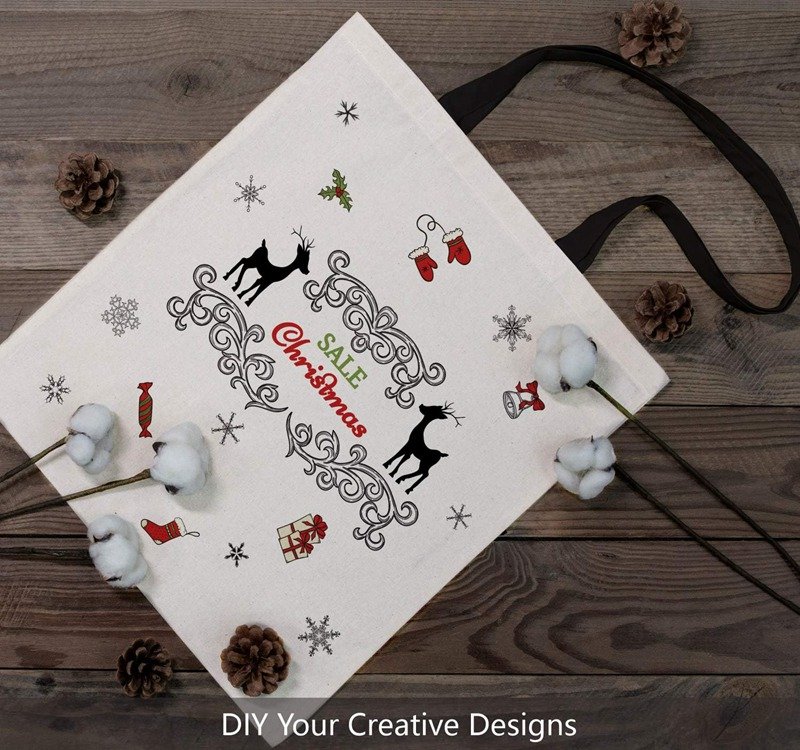
This method utilizes heat to transfer an image onto fabric, with the design often created using wax. Typically, the transfer is achieved through wax sheets or by layering wax dye directly onto the blank tote bag. However, you can explore more creative techniques, such as using Teflon sheets to produce whimsical designs like a holographic heart. For a step-by-step guide on making this particular tote bag, click here.
The most suitable fabric for heat transfer printing is undoubtedly cotton, as it handles the process exceptionally well. However, there are other fabrics that can also yield great results:
- Cotton blend fabric: These blends offer the softness of cotton with added durability from synthetic fibers.
- Canvas: Known for its robustness, canvas is an excellent choice for creating long-lasting designs.
- Polyester: While not as absorbent as cotton, polyester can still produce vibrant and durable prints when using the right heat transfer techniques.
Heat transfer printing allows for a wide range of creative possibilities, from intricate designs to bold, vibrant images. By choosing the right fabric and experimenting with different materials and techniques, you can achieve stunning, customized tote bags that stand out. Whether you’re using traditional wax methods or trying out innovative approaches like Teflon sheets, this technique offers a versatile and exciting way to express your artistic vision.
Digital Printing|(DP)
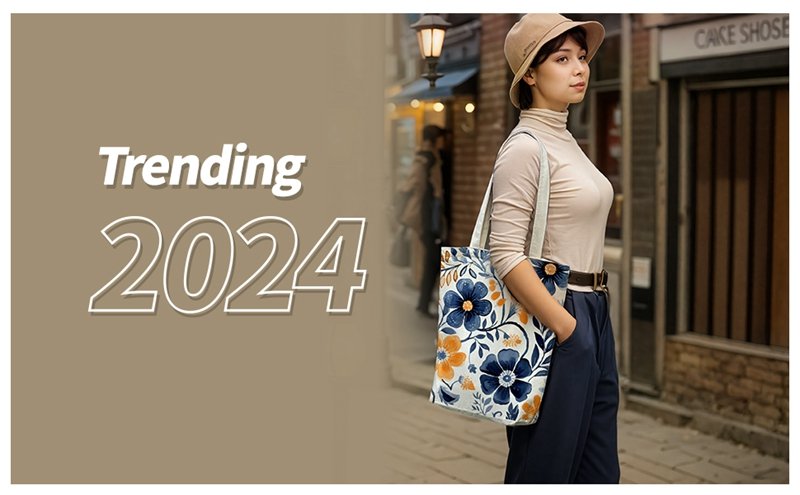
This represents the latest advancement in textile printing, providing printers with an unprecedented production speed and the ability to replicate intricate designs with ease. As a result, an increasing number of people are opting for this customization method for their blank tote bags.
Digital printing works by using a computer-controlled print head to spray liquid ink onto the fabric. Unlike screen printing, which requires separate steps for each color, digital printing can produce a full spectrum of colors in a single step. However, it is worth noting that digital prints are not as durable as those produced through serigraphy. To ensure the longevity of your digital prints, it’s important to follow some simple care tips.
Fabrics that are well-suited for digital printing include:
- Cotton: Soft and highly absorbent, cotton ensures vibrant and long-lasting prints.
- Canvas: Known for its durability and texture, canvas is an excellent choice for tote bags.
- Polyester: Ideal for high-quality, detailed prints due to its smooth surface.
- Wool: Offers a unique texture that can add depth to printed designs.
- Viscose: This semi-synthetic fabric absorbs ink well, producing sharp and vivid prints.
- Silk: Provides a luxurious feel and exceptional print clarity.
- Mixed fabrics: Blends of different materials can offer the best of both worlds, combining durability with excellent print quality.
By choosing the right fabric and following proper care instructions, you can create stunning, long-lasting designs with digital printing. This method’s ability to handle complex patterns and vibrant colors makes it an excellent choice for personalizing tote bags and other textile items.
Read More:Your Trusted Custom Tote Bags Manufacturer
Embroidery Process
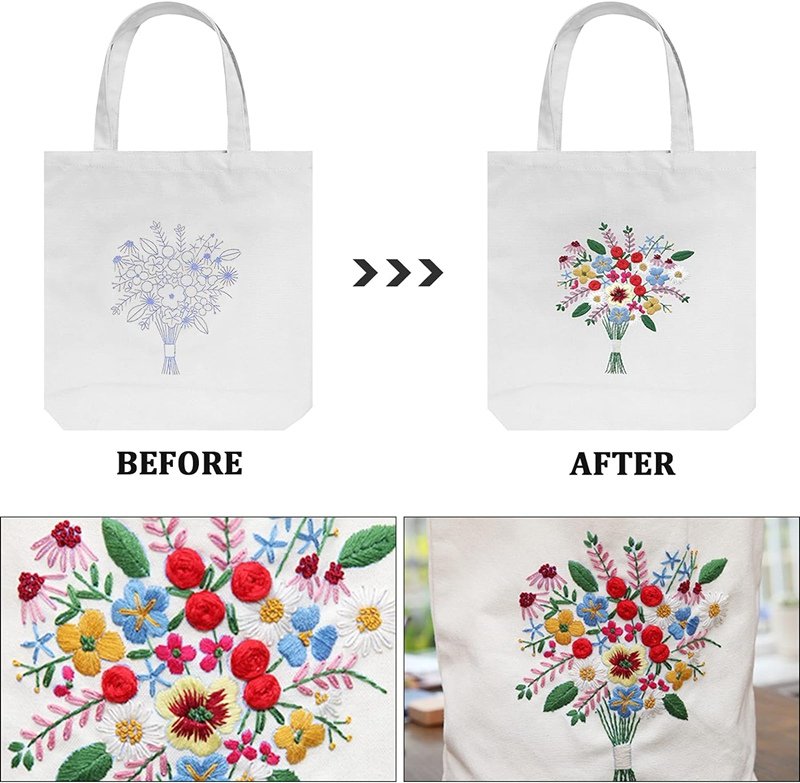
Another ancient fabric decoration technique is embroidery. This method offers two main approaches: DIY and automated service. Before choosing a path, consider the complexity of your design, the number of tote bags you want to decorate, and the time you are willing to invest.
Embroidery can be a wonderful hobby to pick up, requiring only some basic supplies and practice. There are many stitching styles to explore, allowing you to experiment and create intricate designs. You can also add text to your tote bag, giving it a personal touch. For instance, if you like our “Vegan Vibes” burlap tote bag, you can follow our DIY tutorial. For inspiration, check out different embroidery letter font ideas.
Alternatively, you could opt for a professional embroidery service. While this option is more expensive than digital or screen printing, it can deliver high-quality results. However, it has limitations in reproducing complex images, so you might need to simplify your design. The embroidery machine uses different needles for each color and can achieve up to 1,000 stitches per minute.
The best fabric choices for embroidery are:
- Tightly woven even-weave fabrics: Ideal for surface embroidery, these fabrics provide a stable base for detailed designs.
- Loosely woven fabrics: Suitable for specific techniques like drawn thread, pulled thread, and counted thread, these fabrics allow for more intricate stitching methods.
Embroidery offers a rich and tactile way to customize tote bags, whether you choose to do it by hand or with a machine. By selecting the right fabric and technique, you can create beautiful, personalized items that showcase your creativity.
Woven Labels
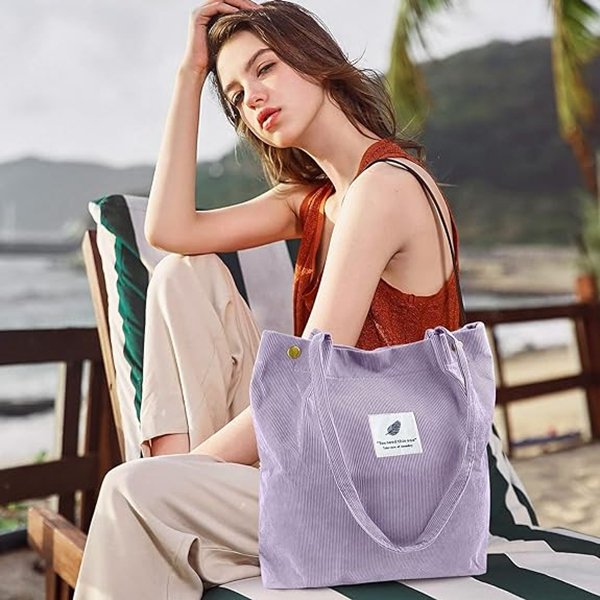
The process of creating woven labels is a meticulous and detailed craft that has been perfected over the years. Unlike silk screen printing or serigraphy, woven labels involve weaving threads together to form intricate designs directly into the fabric. This technique is widely used for branding and labeling in various industries, including fashion, textiles, and home goods.
Woven labels are produced on specialized looms that interlace threads to create a detailed and durable label. The design is programmed into the loom, which then weaves each label with precision. This method ensures that the design remains intact even after numerous washes, providing a long-lasting branding solution.
The quality and durability of woven labels make them ideal for items that require frequent washing and handling, such as clothing, bags, and linens. The intricate weaving process allows for a high level of detail, making it possible to include complex logos, text, and images.
To create woven labels, the selection of threads is crucial. Different thread types, such as polyester, cotton, or satin, can be used depending on the desired texture and durability. Polyester threads are popular for their strength and resistance to shrinking and fading, while cotton threads offer a softer feel.
Fabrics best suited for woven labels:
- Cotton: Soft and natural, perfect for a more delicate touch.
- Polyester: Polyester: Strong and resistant to fading, ideal for high-durability needs.
- Satin: Provides a luxurious finish with a smooth texture.
Woven labels add a touch of professionalism and quality to products. By incorporating this technique, brands can ensure their labels remain vibrant and legible throughout the product’s lifespan. The process may be intricate and time-consuming, but the result is a high-quality label that enhances the overall appeal and durability of the item.
Stamped Leather Process
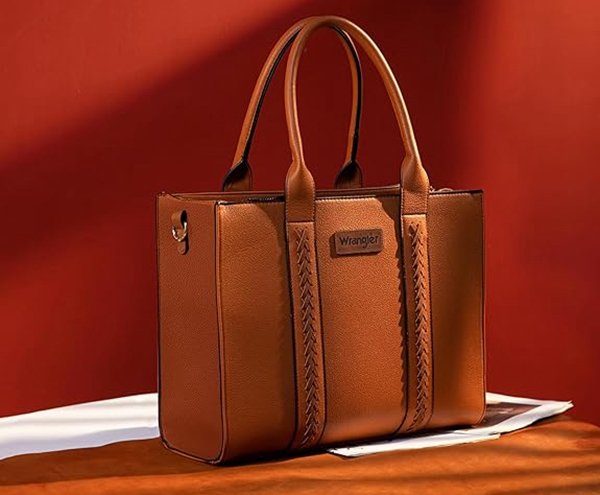
The process of creating stamped leather involves a traditional and artistic method of imprinting designs onto leather surfaces. stamped leather relies on physical embossing to create patterns and images.
Stamping leather involves pressing a design into the leather using metal stamps, which can range from simple geometric shapes to intricate custom designs. This technique requires a combination of precision and artistry to achieve the desired effect.
Historically, leather stamping has been used for various purposes, including decorative elements on saddles, belts, wallets, and other leather goods. This method ensures a durable and lasting design that becomes an integral part of the leather item.
The process begins by selecting high-quality leather, as the material’s characteristics significantly impact the final result. The leather is often dampened to make it more pliable and receptive to the stamping process. The chosen design is then meticulously transferred to the leather using metal stamps and a mallet. Each stamp is carefully aligned and struck to imprint the design onto the leather surface.
Stamping leather requires skill and patience, as the depth and clarity of the design depend on the precision of each strike. This handcrafted technique gives each piece a unique and personalized touch, making stamped leather items highly sought after for their craftsmanship and durability.
For best results, the following types of leather are commonly used:
- Full-grain leather: Known for its strength and natural texture, it provides a rich canvas for stamping.
- Vegetable-tanned leather: This type of leather is ideal for stamping due to its ability to absorb moisture and hold intricate designs.
- Top-grain leather: Offers a smooth surface that is perfect for detailed and precise stamping.
Metal Plate
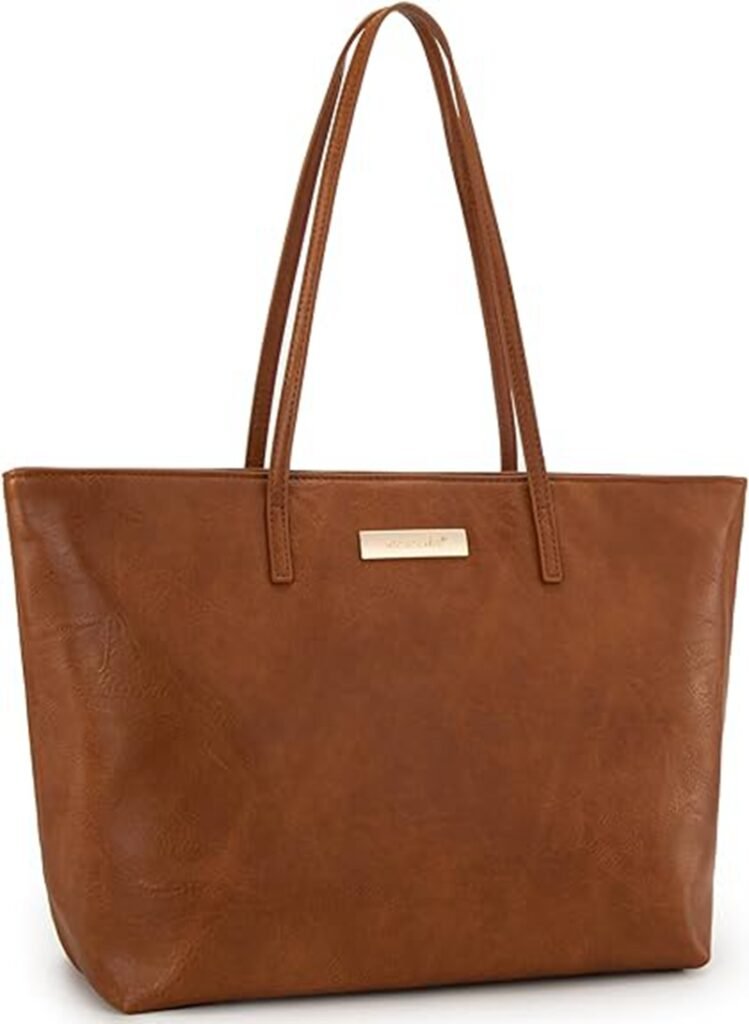
Metal plating, also known as etching or engraving, is a versatile technique used in various industries, including manufacturing, art, and design. metal plating involves the chemical or mechanical removal of material to create intricate designs or patterns on metal surfaces.
The process of metal plating typically begins with preparing a metal plate, which can be made from materials such as copper, brass, or stainless steel. The surface of the plate is then coated with a resist material that protects certain areas from being etched or engraved. A design or pattern is transferred onto the plate either manually or using digital methods.
Etching involves immersing the prepared metal plate into an acid solution that eats away at the exposed areas, creating recessed lines or patterns. On the other hand, engraving uses tools such as burins or lasers to physically cut into the metal surface, producing raised designs.
Metal plating is valued for its precision and durability, making it suitable for creating detailed artwork, signage, decorative elements, and functional parts such as circuit boards and nameplates. The technique allows for the reproduction of intricate designs with high fidelity, whether for aesthetic purposes or industrial applications.
Over time, advancements in technology have expanded the capabilities of metal plating, enabling more complex designs and faster production times. Digital techniques now allow for precise control over etching depths and pattern intricacies, enhancing the versatility and quality of finished metal products.
Materials suited for metal plating vary depending on the specific application:
- Copper: Commonly used for its excellent conductivity and ability to produce fine details.
- Brass: Offers a warm, golden hue and is often chosen for decorative purposes.
- Stainless steel: Known for its durability and resistance to corrosion, ideal for functional and industrial applications.
Block Printing Process
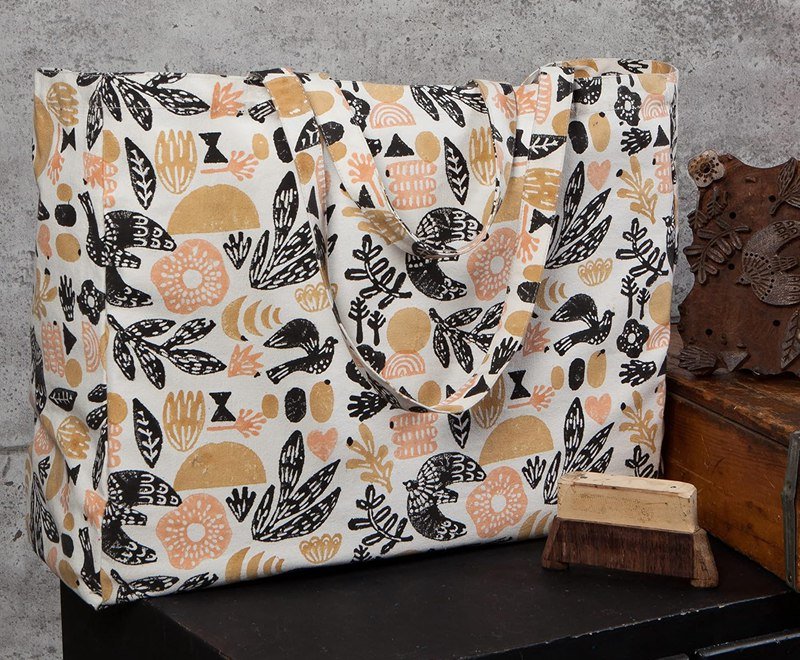
Block printing technique, originating from ancient China, remains a cherished tradition throughout East Asia and is gaining popularity among Americans for its sustainable approach to fashion design. this eco-friendly technique produces stunning results, making it an attractive option for those seeking unique and environmentally conscious ways to decorate tote bags.
The process involves using carved wooden blocks to apply designs to fabric, creating intricate patterns through repeated stamping. Unlike other printing methods, block printing technique is labor-intensive and time-consuming, but the finished product is often considered a valuable piece of art.
The technique’s ancient roots add a layer of historical significance to each creation. It has endured for millennia with minimal changes, preserving the traditional craftsmanship that makes it so special. The manual effort involved in block printing imbues each item with a unique character and value that automated processes in fast fashion cannot replicate. In an era dominated by mass production, artisanal methods like block printing offer a soulful alternative.
For the best results, choose fabrics that are well-suited for block printing. These include:
- Cotton: Known for its absorbency and smooth surface, cotton is an excellent choice for detailed prints.
- Polyester: Although synthetic, polyester can still yield good results with block printing when properly prepared.
- Hemp: This durable and eco-friendly fabric works well with block printing, adding a natural texture to the design.
- Linen: Offers a crisp, clean surface that enhances the sharpness of block-printed patterns.
Block printing allows for endless creativity and personalization. by selecting the right fabric and investing the time to master this ancient technique, you can create tote bags that are not only beautiful and unique but also carry a rich heritage of traditional craftsmanship.
Tie Dye Process
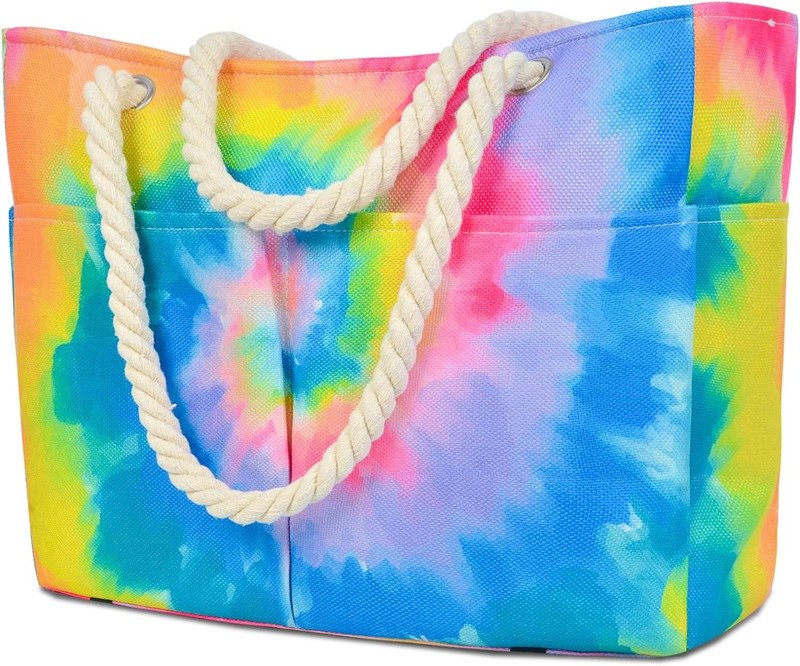
Tie-dye became a cultural phenomenon in the 1960s as a form of protest art and has since evolved into a recurring fashion trend, with each decade bringing new styles and color combinations. The current trend features monochrome garments and fruity pastel hues.
One exciting variation of this technique is reverse tie-dyeing a tote bag, which adds a unique twist to the traditional method. To start, choose a blank tote bag in your favorite color and strategically apply bleach to create patterns. This method simplifies the process and is perfect for beginners, requiring only bleach, which is a common household item.
If you want to create a tote bag similar to the one shown in the photo above, follow our step-by-step guide on reverse tie-dyeing. Begin by soaking and rinsing the fabric. Next, twist the material and secure it with several rubber bands. Experiment with different twisting techniques and rubber band placements to achieve various patterns. The result will be a stylish monochrome tote bag that complements any outfit.
Natural fabrics are best suited for this technique as they absorb color pigments well. If you’re unsure about the results on a specific material, try a quick test on a fabric swatch. Here are the best fabrics for tie-dyeing or bleaching:
- Cotton: Ideal for its excellent absorption and vibrant color results.
- Cotton blends: These blends retain much of the cotton’s absorbent qualities while offering added durability.
- Silk: Provides a luxurious feel and rich colors.
- Denim: Offers a unique texture and appearance when dyed or bleached.
- Rayon: Known for its smooth texture and bright dye results.
Tie-dyeing and reverse tie-dyeing allow for endless creativity, enabling you to design tote bags that are truly one-of-a-kind. By selecting the right fabric and experimenting with different techniques, you can create fashionable and personalized items that reflect your unique style.
Drawing Process
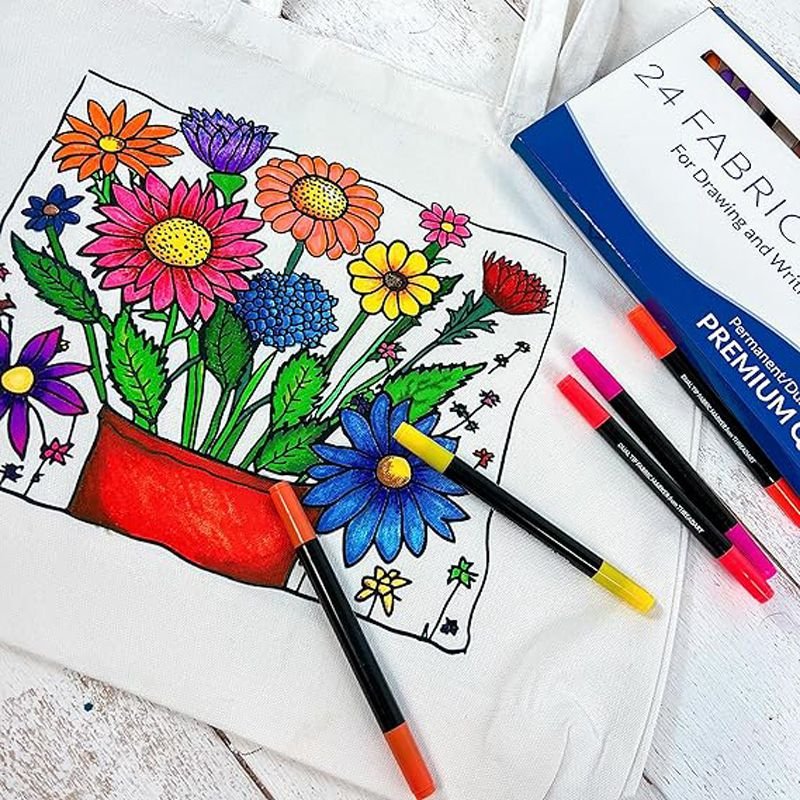
Drawing on fabric is often the first step in outlining designs for many DIY decoration projects, but it can also stand alone as a complete technique. There are numerous tools available for this purpose, from markers to pens specifically designed for fabrics. The choice of tools should align with your design needs. For instance, we decorated this white blank tote bag using fabric pencils and markers. Click here to learn how to create it yourself.
Depending on your project, you might need the following supplies:
- Fabric pens: Washable and fade-resistant, perfect for permanent designs.
- Chalk: Ideal for marking on dark fabrics and easily removable.
- Fabric markers: Designed to be permanent and not wash out.
- Pencil: Great for tracing designs and can be easily washed out.
- Ruler: Essential for aligning and measuring your design accurately.
While you can draw on a wide variety of fabrics, tightly woven materials with smooth surfaces are ideal for achieving the best results. Loosely woven or textured fabrics may not provide an optimal base for your designs. Here are some of the best materials for drawing on fabric:
- Cotton: Soft and easy to work with, providing a good surface for drawing.
- Canvas: Durable and smooth, perfect for detailed designs.
- Wool: Offers a unique texture and can be great for more rustic or textured designs.
Drawing on fabric opens up a world of creative possibilities. By selecting the right tools and materials, you can transform a plain tote bag into a unique piece of art. experiment with different techniques and supplies to find the best combination for your project.
Brush Painting Process
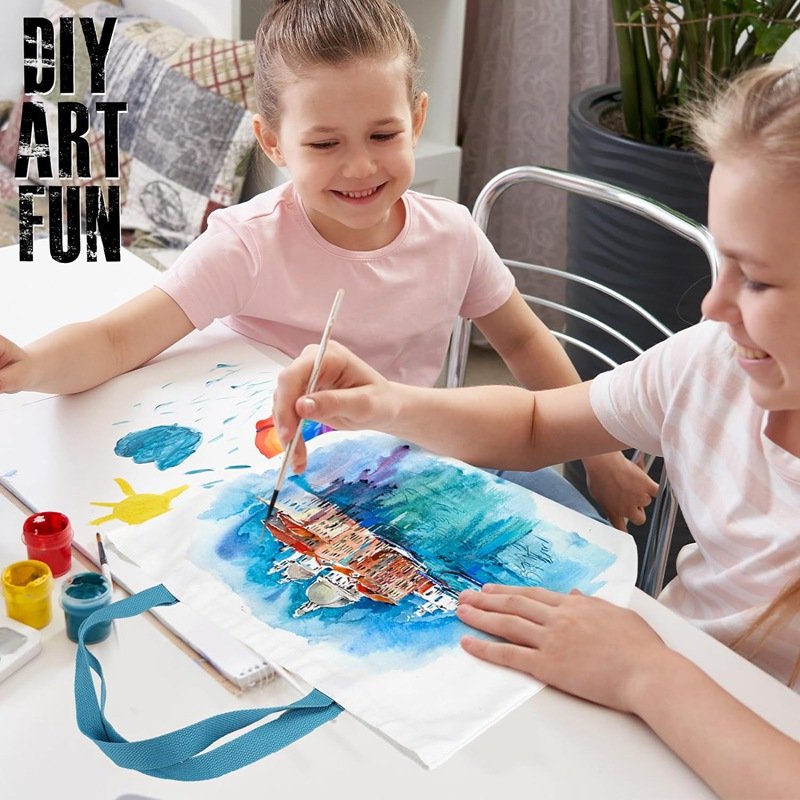
Fabric painting offers a vibrant and creative way to customize a blank tote bag. To get started, gather some brushes and fabric paint, then let your imagination take over. If you’re inspired by oversized heart designs, check out our DIY tutorial for guidance.
Choosing the right tote bag is crucial for your fabric painting project. Cotton or canvas tote bags are ideal due to their tight weave and ability to absorb paint well. Light-colored bags, especially white, are perfect for beginners as they allow the colors to stand out more vividly. However, experimenting with colored bags can also elevate your design to the next level, adding depth and uniqueness.
Here are the best fabrics for painting tote bags:
- Cotton: Provides a smooth and absorbent surface, making it easy to work with.
- Canvas: Durable and textured, canvas is great for detailed and vibrant designs.
- Silk: Offers a luxurious surface and enhances the vibrancy of colors.
- Rayon: Known for its smooth finish and excellent paint absorption.
Fabric painting is a fun and expressive way to personalize tote bags. by choosing the right materials and experimenting with different techniques and colors, you can create unique and eye-catching designs.
Spray Painting Process
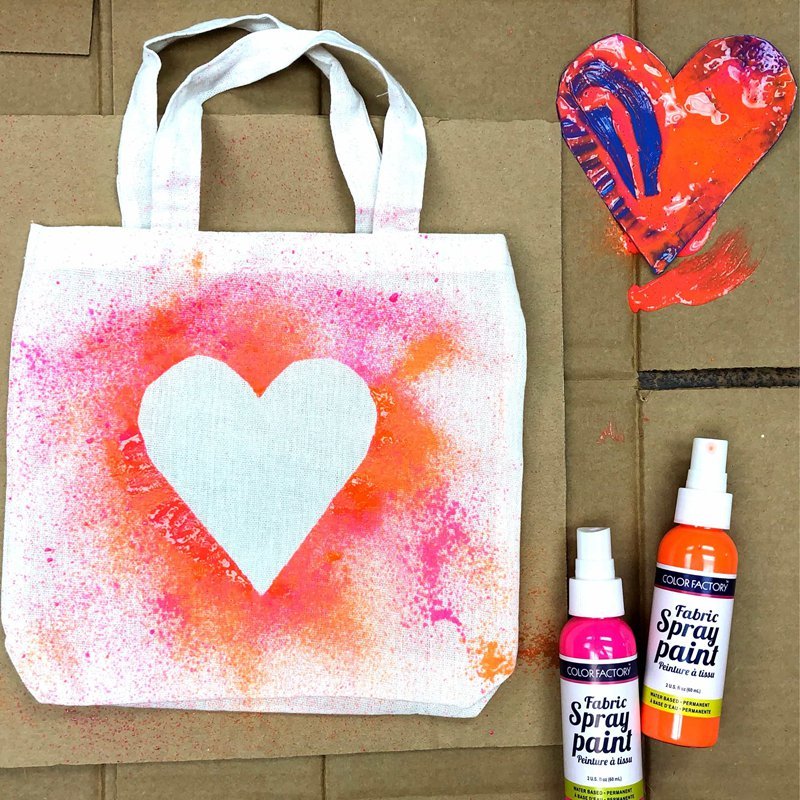
Spray painting on fabric is an enjoyable and straightforward way to achieve designs with striking visual effects. To ensure the best results, invest in high-quality spray paint. If you are new to this technique, start with a simple method: create a cardboard cutout, place it on the fabric, and spray over it. You can repeat this process multiple times to develop a pattern.
This customization method is versatile and can be used on almost any fabric. However, natural materials are ideal because they absorb pigments more effectively. Here are some excellent fabric choices for spray painting:
- Cotton: Known for its absorbency and smooth texture, making it perfect for vibrant and detailed designs.
- Canvas: Durable and textured, offering a robust surface for spray paint.
- Polyester: While synthetic, it can still yield good results with proper preparation.
- Blend fabrics: These blends combine the benefits of different materials, providing a versatile base for spray painting.
Spray painting allows for creative freedom and experimentation. By choosing the right materials and techniques, you can transform a plain tote bag into a stunning piece of art.
Mixed Media
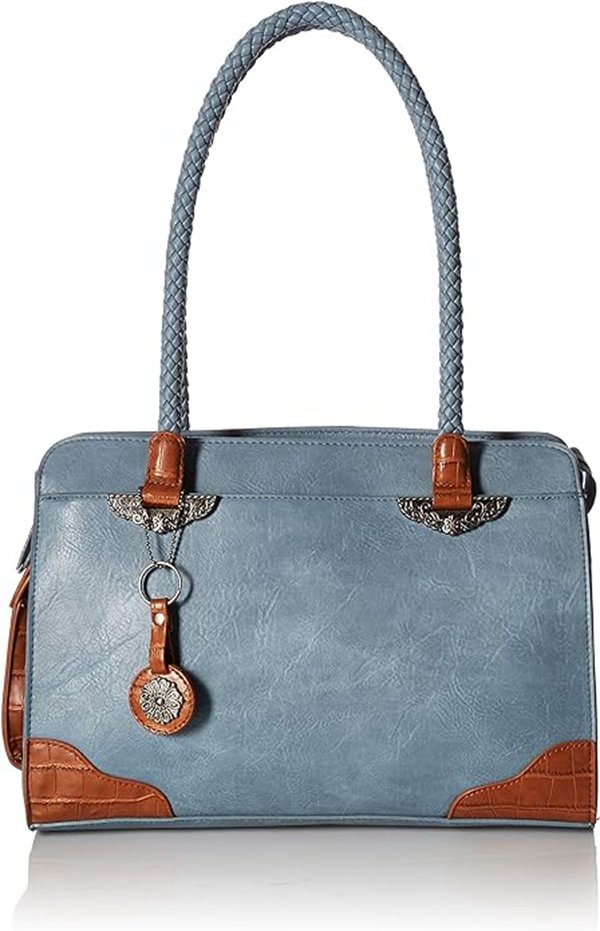
Unleash your creativity by embellishing a blank tote bag with various craft accessories to create a unique and personalized design. You can use a wide range of materials available at craft stores, including:
- Rhinestones
- Beads
- Pearls
- Lace
- Feathers
- Fringe
- Seashells
- Fabric swatches
These are just a few examples of the elements you can incorporate into your project. You can choose to use a single type of accessory or combine several for a more intricate design. For instance, you might decorate your tote with rhinestones to mimic the look of your favorite game or add a mix of lace and pearls for a more elegant touch.
Embellishing your tote bag with these materials allows for endless customization possibilities. By strategically placing and combining different accessories, you can transform a simple tote bag into a unique piece that reflects your personal style and creativity.
Final Suggestion
By employing these decoration techniques, you can elevate any blank tote bag into a cherished piece of art. The unique value lies in the personal contribution you bring to the creation process. As you embark on your journey to craft a dream design, it’s essential to savor the experience. experiment with different methods and don’t be afraid to venture beyond traditional boundaries—this is where genuine artistry emerges. embrace innovation and creativity, allowing your imagination to guide you. through this approach, you’ll not only create a visually stunning tote bag but also cultivate a deep sense of accomplishment and artistic fulfillment.
Read more:
Your Trusted Custom Canvas Tote Bags Manufacturer
A Definitive Manual for the Best Totes – All that You Want to Realize About a Tote Bag?
Leather vs Canvas: How to Choose the Ideal Bag for You?
What is The Difference Between Canvas Tote Bags And Cotton Tote Bags ?

